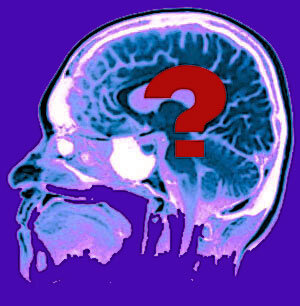People With Alzheimer’s Can’t Clear Plaque
by Fisher Center for Alzheimer's Research Foundation:Scientists have long been studying beta-amyloid, the sticky protein that builds up in the brains of those with Alzheimer’s disease. Everyone makes beta-amyloid, but in those with Alzheimer’s disease, the protein accumulates to toxic levels, eventually forming clumps in the brain called plaque that may play a part in damaging brain cells critical for thinking and memory.But does this buildup of plaque occur in Alzheimer’s patients because they make too much beta-amyloid? Or are they unable to clear the sticky protein that naturally forms, the way healthy people do?Researchers now have a better answer to these questions. It appears that those with Alzheimer’s make perfectly normal amounts of beta-amyloid. The problem is that they are unable to clear it from their brains."Clearance is impaired in Alzheimer's disease," said Dr. Randall Bateman, assistant professor of neurology at Washington University School of Medicine in St. Louis, who led the study that appeared in the journal Science. The findings could have important implications for diagnosis and treatment of Alzheimer’s, as researchers work to find treatments that can speed clearing of beta-amyloid from the brain.In the study, researchers compared a group of 12 men and women with early Alzheimer's disease with 12 healthy peers. Both groups produced beta-amyloid at the same average rate; the protein, at very low levels, seems to play an important role in keeping brain cells from becoming overexcited and firing abnormally. But compared to the healthy controls, those with early Alzheimer’s were 30 percent less able to clear the protein that accumulated in the brain.The scientists estimate that over 10 years, enough beta-amyloid would accumulate in the brain to form the telltale plaques that damage brain areas crucial for thinking and memory."These findings may help point us toward better diagnostic tests and effective therapies. The next question is what is causing the decreased clearance rate," Dr. Bateman said. "These findings support the idea that impaired beta-amyloid clearance is fundamentally linked to Alzheimer's disease."Pathologists have long recognized beta-amyloid as a component of the plaques that riddle the brains of those with Alzheimer’s. One way the brain clears beta-amyloid is to move it into the spinal fluid, where it is broken down and disposed of. Understanding how this occurs could lead to new drugs and treatments that speed the process, before damage to the brain becomes extensive.In those with Alzheimer’s, however, this process is impaired. Levels of beta-amyloid rise as the protein gets “stuck” in the brain, meaning that less of the substance moves into the spinal fluid. That’s one reason why studies have found that lower levels of beta-amyloid in the spinal fluid may be an early indicator of Alzheimer’s disease.Many believe that accumulation of abnormal levels of beta-amyloid in the brain initiates a cascade of events leading to the death of brain cells and ultimately to dementia. In the rare, early-onset forms of Alzheimer's that are linked to genetic mutations, there is a marked increase in beta-amyloid production. In the more common, late-onset form of Alzheimer's, the mechanisms leading to increased beta-amyloid levels are not well understood.Prior studies suggest several possible explanations for the slower clearance of beta-amyloid in late-onset Alzheimer's. One possibility is that as beta-amyloid accumulates, it acts as a sink for more of the protein, trapping it within the brain. The researchers believe that sorting out these mechanisms is likely to help speed the development of new drugs for the disease."Abnormal protein deposits within the brain are a hallmark not only of Alzheimer's disease, but of many neurological disorders. With knowledge about how these proteins accumulate, we may be able to slow that process and reduce the damage to the brain," said Roderick Corriveau, Ph.D., a program director at the National Institute of Neurological Disorders and Stroke.Source: http://www.alzinfo.org/05/articles/people-alzheimers-cant-clear-plaquePicture Source: Health Jockey

